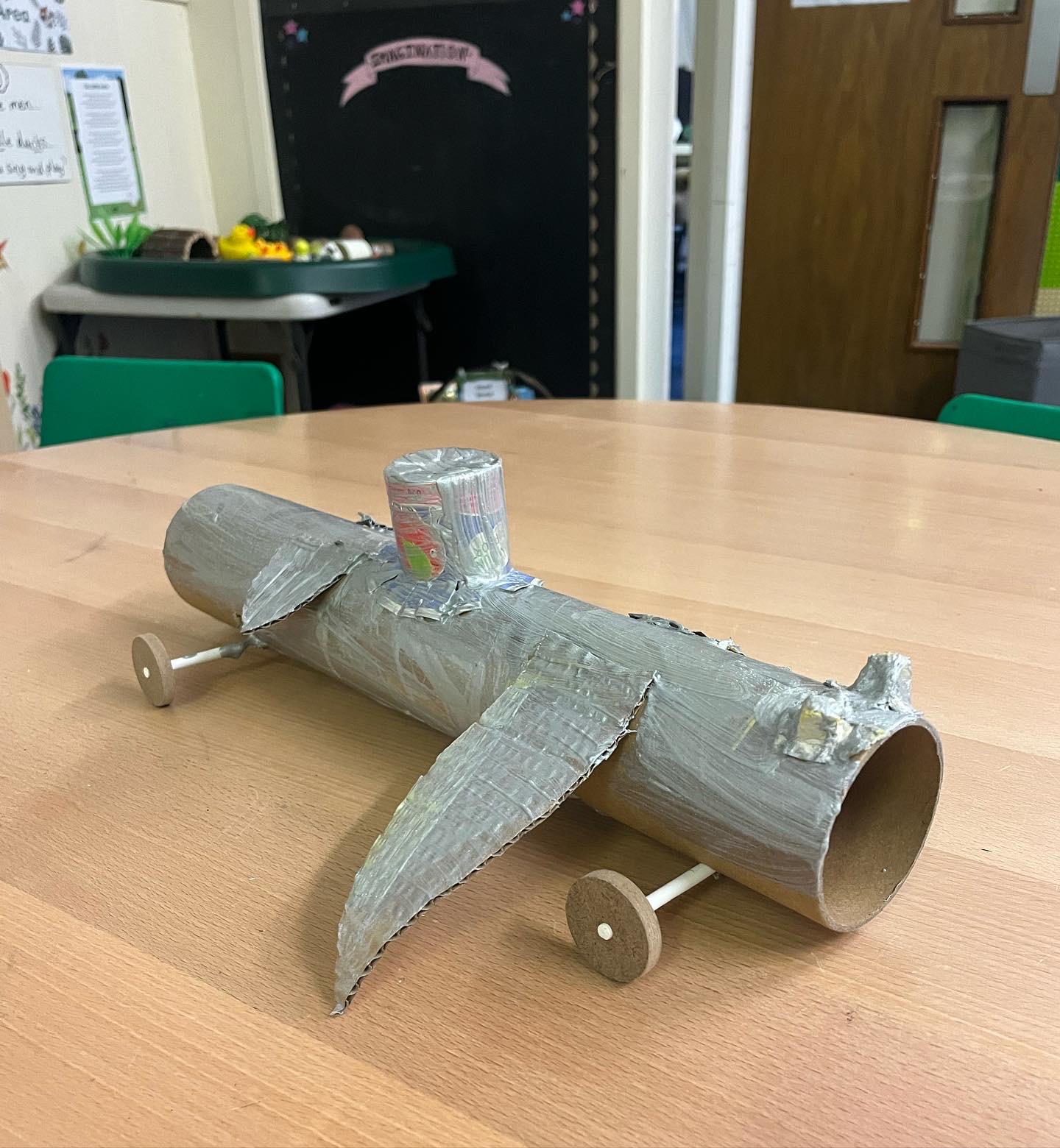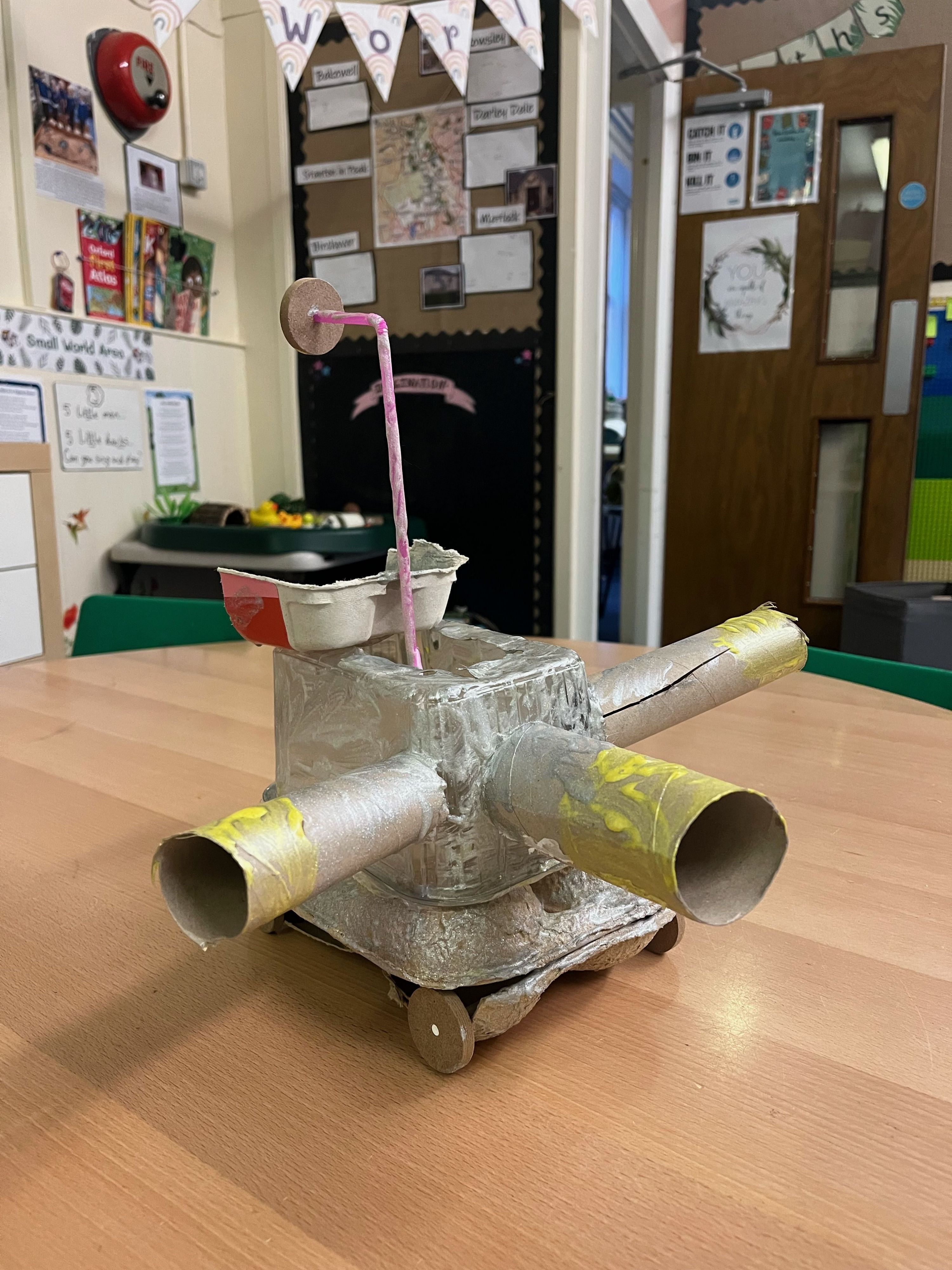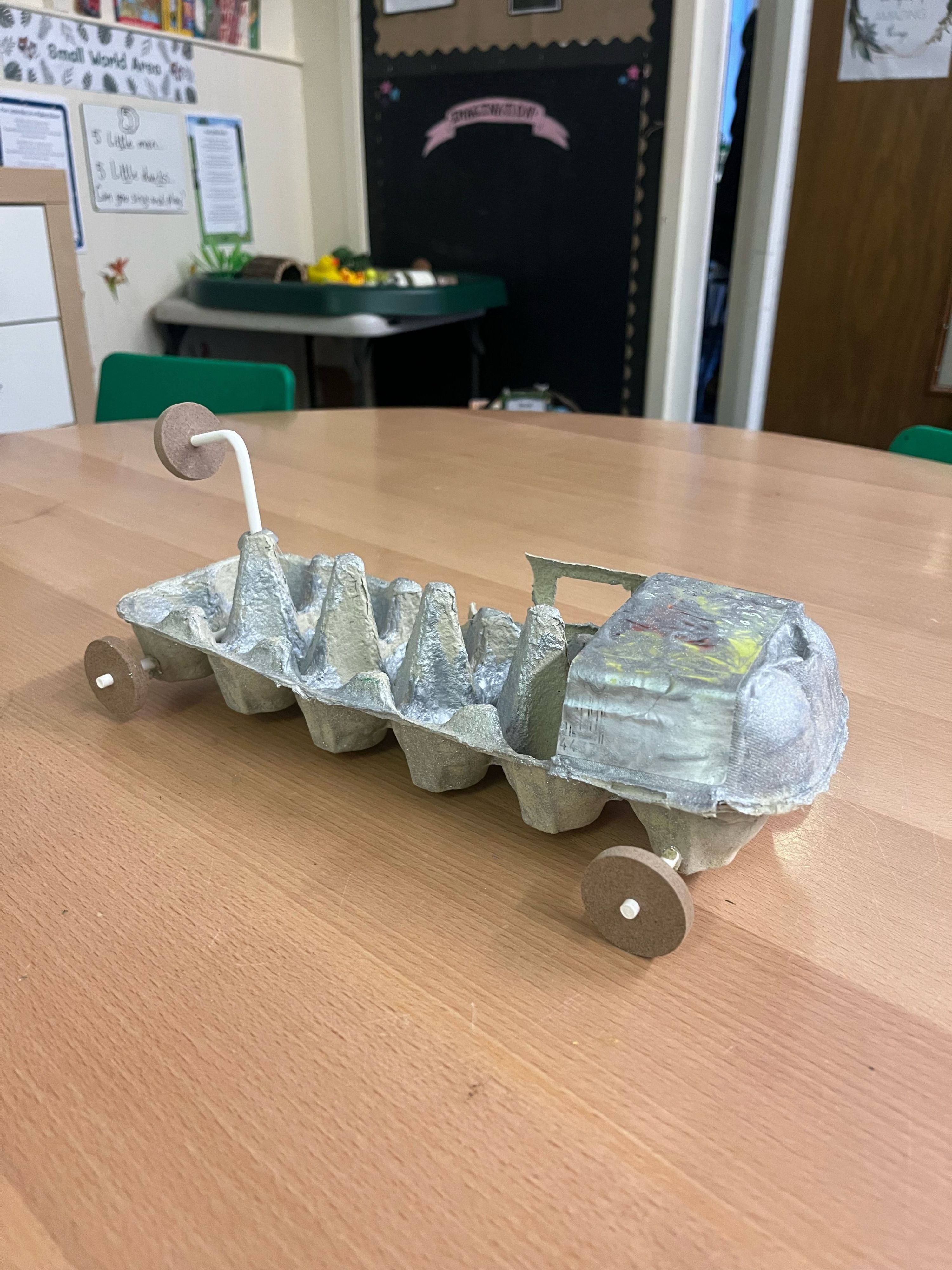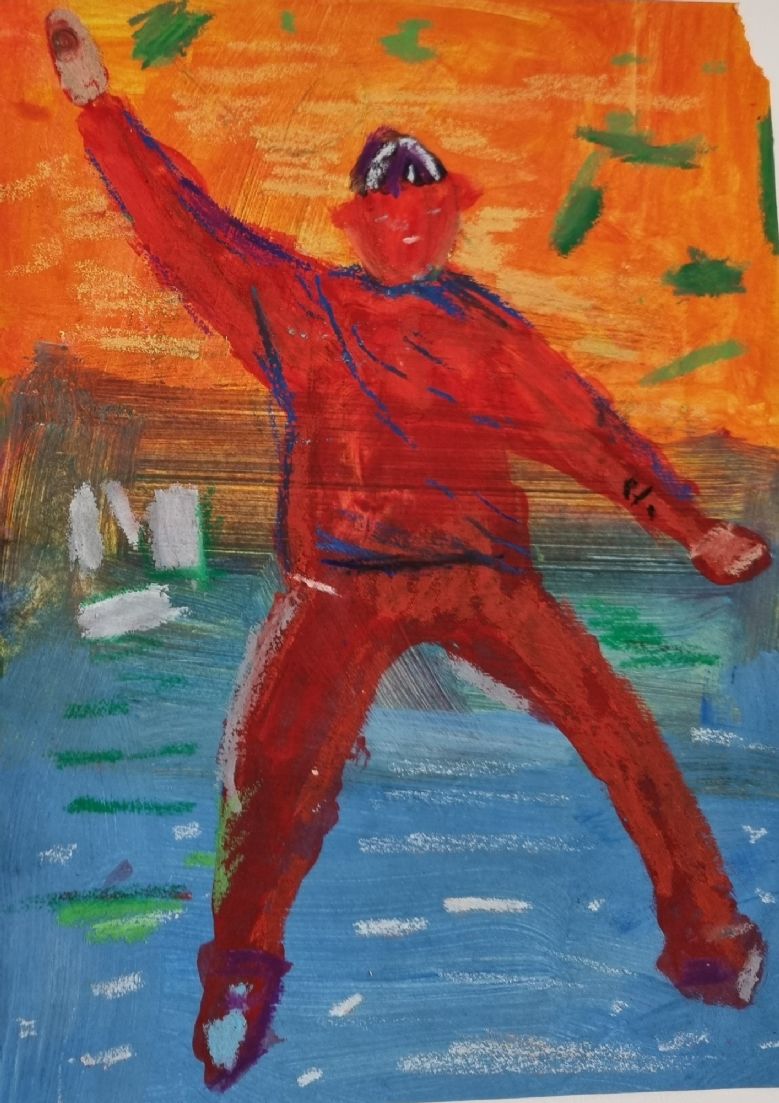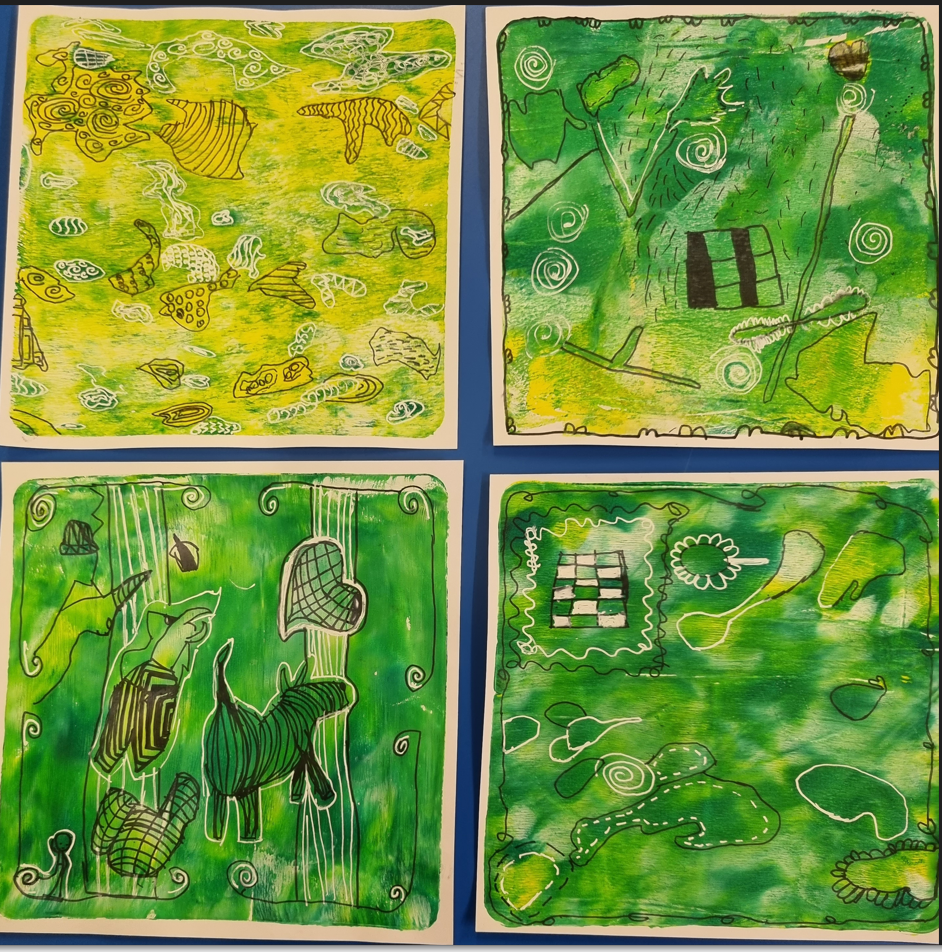Art & Design Technology
At Rowsley C of E Primary we believe that art and design technology embodies some of the highest forms of human creativity. Through a rich and varied art & DT curriculum we strive to teach the children how to express their thoughts and values. Our aim is to equip our children with the vision, voice and skills to be able to create works of art to express themselves and their views.
We have developed a well planned curriculum which help our children progress in the knowledge and skills needed to ensure their creativity and independence. As pupils progress, they should be able to think critically and develop a more rigorous understanding of art and design. Part of our curriculum will enable children to learn how art and design both reflect and shape our history, and contribute to the culture, creativity and wealth of our nation. Through the evaluation of past and present design and technology, they develop a critical understanding of its impact on daily life and the wider world, such as learning about global warming. High-quality design and technology education makes an essential contribution to the creativity, culture, wealth and well-being of the nation.
Across the year groups our progression plan ensures we introduce a variety of knowledge about places, peoples, cultures and history of the world in which we live and interlink this with art and DT skills.
Please look at our progression map to find out more about how we build and develop skills and knowledge through the National Curriculum's areas of study.
Please contact Mrs Wyer (a.wyer@peaktorfederation.co.uk) if you have questions or would like to talk about any aspects of Art & DT at Rowsley.
“Then the LORD said to Moses, … and I have filled him with the Spirit of God, with wisdom, with understanding, with knowledge and with all kinds of skills— to make artistic designs for work in gold, silver and bronze, to cut and set stones, to work in wood, and to engage in all kinds of crafts.” (Exodus 31:1-5)
Year 5 and 6 Bridge Building
We became engineers for this unit. We talked about the purpose of our build, researched different bridges (including those in Kolkutta), we then designed our own bridges and built them. The final stage was to evaluate our builds. The brief was to build a bridge at least 30cm long, 10 cm wide and it must hold at least 500g.


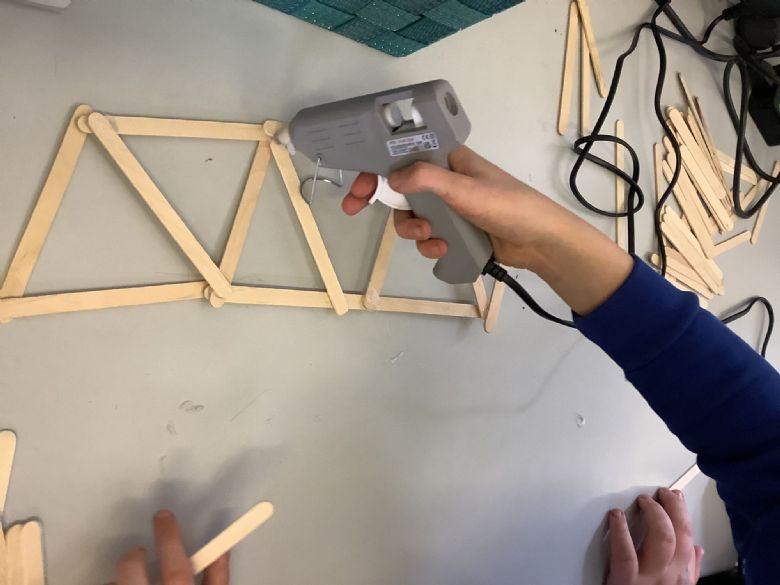

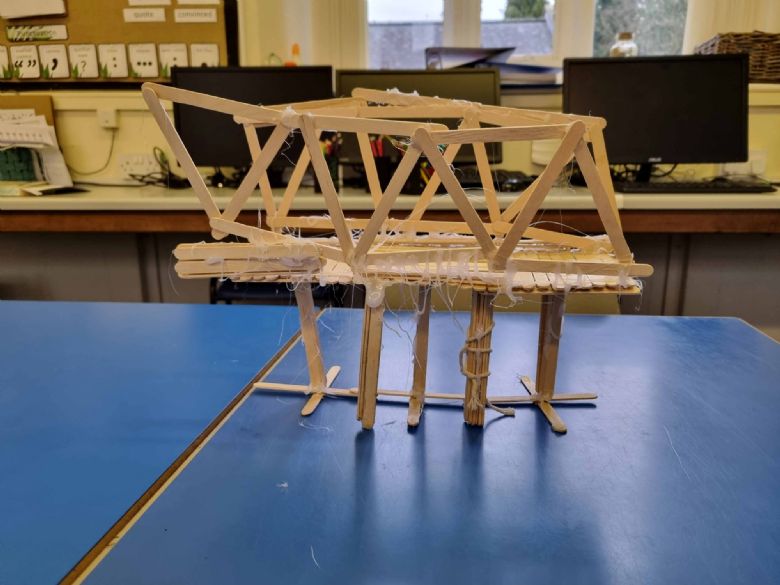
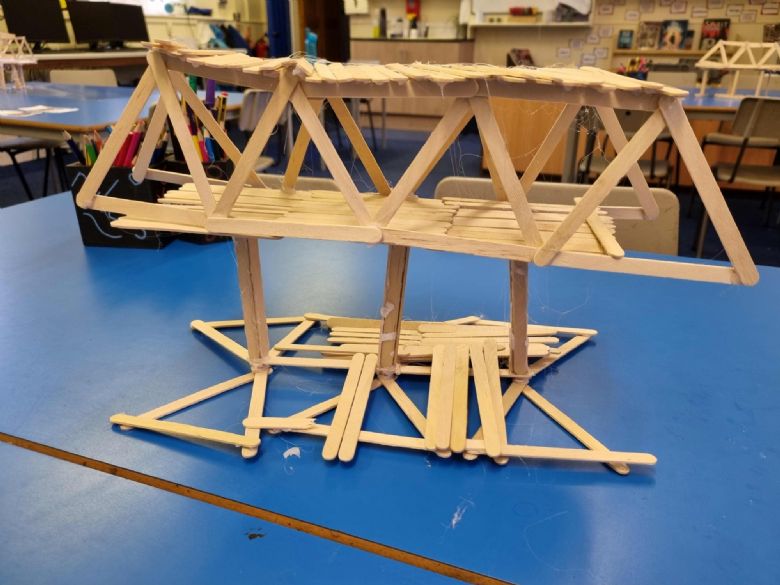
Year 5 and Year 6 Digital Media and Painting (Emil Nolde)
Year 5 and Year 6 Gelli Printing
Year 1 and 2 Mechanisms - Moon Buggies
